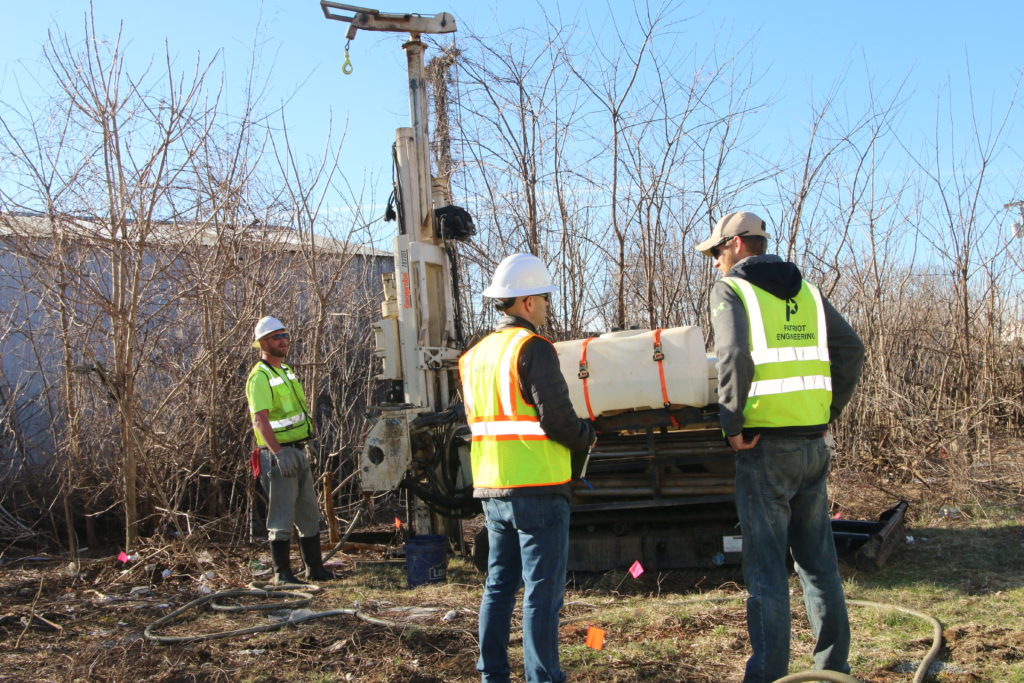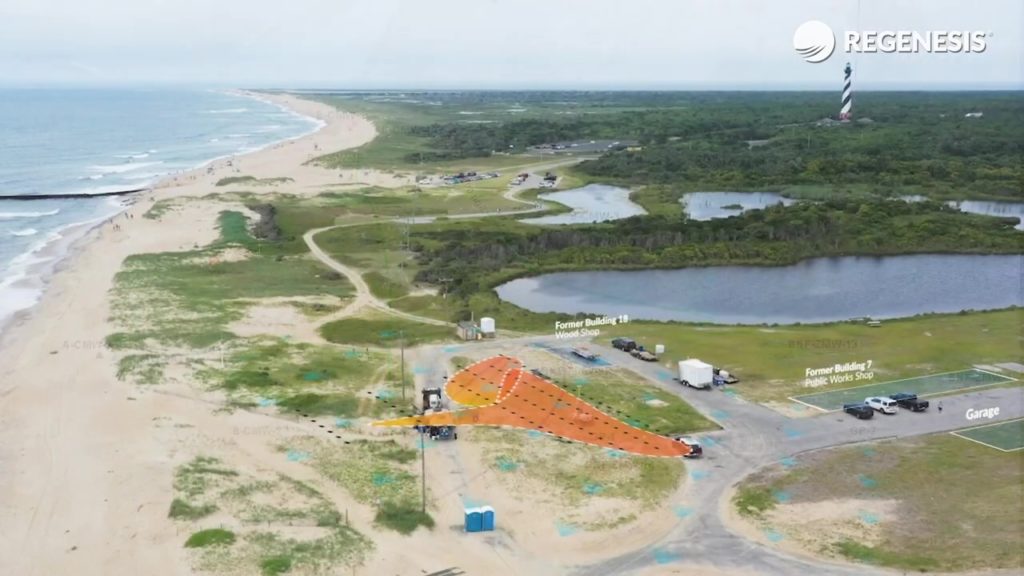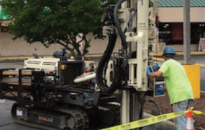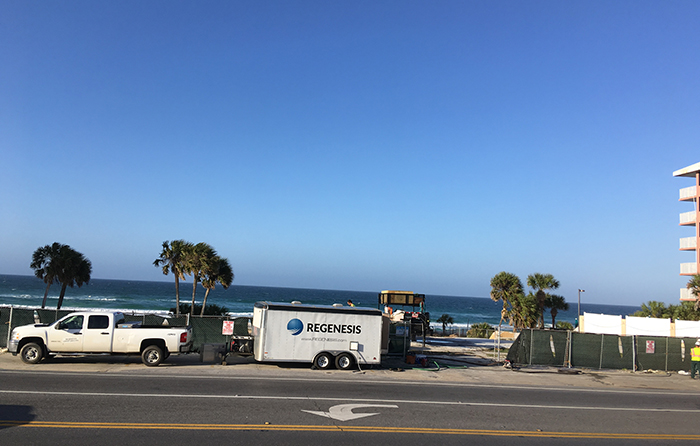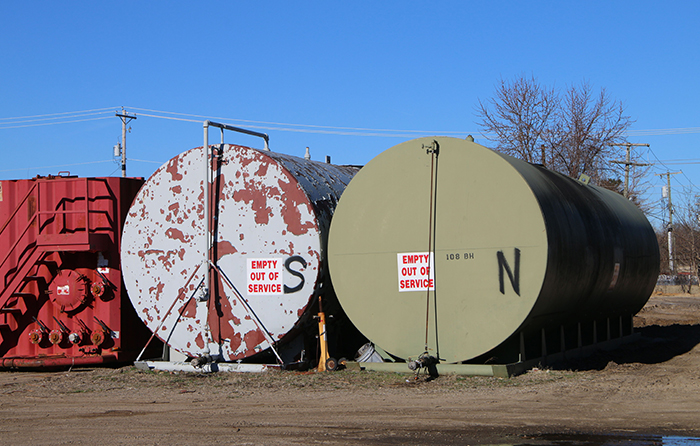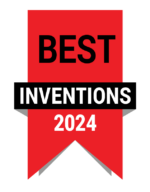A Fuel Spill Caused by a Truck Rollover in Montana Receives No Further Action Following PetroFix Application
Case study highlights:
- No further action received
- Potential impacts to scenic river eliminated
- 2400 pounds of PetroFix applied to fuel spill excavation
This case study reviews a semi-truck that was hauling gasoline and diesel and overturned into a dry irrigation ditch in Montana. The diesel tanks ruptured and released fuel into the ditch, impacting the shallow water table with petroleum hydrocarbons (PHCs), including benzene, toluene, ethylbenzene, and xylenes (BTEX). The irrigation ditch feeds a larger irrigation canal that empties into the Yellowstone River. In response, an area of approximately 2,500 square feet area was excavated and approximately 800 tons of the grossly impacted soils were removed. Following the emergency response effort, Pioneer Technical Services, Inc. (Pioneer) reviewed the emergency response report, completed a site inspection and met with the property owner to discuss the emergency response clean-up reconstruction methods and materials to be used.
PetroFix Pilot Study Leads To Successful Full-Scale Application
Case study highlights:
- Previous pilot testing results provided promising results leading to a full-scale application
- PetroFix is designed to remediate petroleum contamination completely at the lowest total cost to closure
- Site closure strategy included reducing groundwater concentrations, inhibiting plume migration, and demonstrating plume stability site-wide
This case study reviews a full-scale PetroFix remediation program that was designed and implemented at seven locations to treat petroleum hydrocarbons (PHCs) following a successful field pilot test.
Two post-injection groundwater sampling events were completed in June and September 2019. In December 2019, a supplemental PetroFix injection was completed in the PHC source area onsite following the PersulfOx and ORC-A pretreatment step and groundwater equilibration. Additionally, a new treatment area was added where a small quantity of PetroFix was injected.
First Application of PetroFix at Petrol Filling Station in Sweden
Case study highlights:
- The integrated remediation treatment strategy ensured that optimum treatment efficiency was maintained throughout the phases of works
- The amount of excavation and offsite disposal was minimized
- All underground infrastructure remained in situ
- All works were completed at an active petrol filling station with minimal disruption to the commercial operations of the facility
- 12-month period monitoring results show reductions of >98% of the gasoline range of petroleum hydrocarbon concentrations in the groundwater
RGS Nordic was asked by Circle K to remediate groundwater contaminated with gasoline at an active Petrol Filling Station (PFS) in Nykvarn, Sweden. During the site investigation, petroleum hydrocarbon contamination was identified within the fill material around the underground storage tank (UST) farm.RGS Nordic was required to deliver a remediation strategy that posed minimal disruption to the commercial operations of the PFS. The chosen remediation strategy combined targeted excavation, in situ chemical oxidation (ISCO), in situ sorption, and enhanced aerobic biodegradation using a range of complementary REGENESIS technologies: RegenOx®, ORC-Advanced® and PetroFix®.
PetroFix Chosen as Most Cost-Effective Approach
Case study highlights:
- PetroFix Remediation Fluid was chosen because it is specifically designed to treat PHC plumes stemming from bulk storage, gas station, and UST spills.
- The responsible party plans on closely monitoring the site and is using PetroFix on other CERCLA/RCRA-funded sites to accelerate site closure.
- The crew was able to make real-time adjustments to injection volumes, pressure, tooling, and locations to accomplish the distribution goals.
This case study reviews a PetroFix application to address hydrocarbon contaminants at the former Buxton Naval Auxiliary Air Station, located within the Cape Hatteras National Park in the Outerbanks region of North Carolina. The US Navy utilized the site as a submarine monitoring station from 1956 to 1982. The US Coast Guard (USCG) acquired the facility after 1982 and used the site as a logistical, communication, medical, and supply support center. The site contains four areas of investigation which encompass a total area of approximately 50,000 square feet. Since 2011, the site has been undergoing long-term monitoring. Although the monitoring shows natural attenuation occurring, persistent exceedances of petroleum hydrocarbons warranted additional remediation efforts. In the process of a thorough evaluation of viable remedies, the responsible party specified PetroFix micron-scale, liquid-carbon amendment to be applied to quickly and effectively address the contaminant levels and achieve their site goals of NFA.
NFA Status Achieved at Virginia Gas Station Site
Case study highlights:
- PetroFix quickly reduced BTEX, Naphthalene, and THP-GRO Concentrations to reach site goals
- Pollution Complaint Case Closure granted by the VADEQ in less than one year post-application
- Single application of PetroFix addressed contaminants of concern to help site reach closure
This case study reviews a former retail fueling center in Virginia where Sovereign Consulting was hired to demolish the site and remove a 25,000 gallon underground storage tank (UST) which was also the source of the LNAPL contamination. Working with the Virginia Department of Environmental Quality (VADEQ) Sovereign conducted a Site Characterization Assessment and following monitoring was then retained by their client to demolish the fueling center and remove the 25,000-gallon gasoline UST and the associated fueling system which represented the source of the contamination. Once the source of contamination (UST) and the free-product was addressed, Sovereign worked with REGENESIS to formulate and execute a groundwater remediation plan that used PetroFix. Unlike other groundwater treatment materials, PetroFix was utilized due to its dual function – it quickly removes hydrocarbons from the dissolved phase by absorbing them onto the activated micro-carbon particles and the electron acceptors promote hydrocarbon biodegradation in situ to encourage continued remediation. This combination resulted in a rapid decreases in contamination in weeks as opposed to months as determined through monitoring well groundwater sampling and the corresponding concentration curves for each chemical of concern.
Performance-Based Objectives Achieved at Scott AFB
Case study highlights:
- Impacted soil was caused by leaking underground piping and removal of two large UST’s
- Second round of direct push injections included PetroFix to treat lingering BTEX
- One month following application of PetroFix, BTEX levels were at non-detect and have continued to remain at that level for 5 sampling events
This case study reviews the Corrective Action Plan (CAP) at Scott Air Force Base, a large military base located in Southwestern Illinois that was contaminated with petroleum impacted soil. One month following the application of PetroFix™, contaminant levels reached non-detect. Benzene continued to remain non-detect through March 2020 and the site was recommended for no further action. The final CAP Addendum proposed two rounds of groundwater treatment by injection at Former Tank 85 to reduce benzene concentrations below the groundwater remediation objectives. The first round of injections was completed in February through March 2018 and consisted of the use of REGENESIS’ RegenOx®, coupled with ORC Advanced® to stimulate aerobic bioremediation. The initial injection was successful in reducing most contaminants within the affected area. The second round of injections at the former UST was completed in March 2019 using REGENESIS’ PetroFix micron-scale remedial fluid.
PetroFix Successfully Treats Residential Fuel Oil Leak
Case study highlights:
- PetroFix successfully remediated the fuel oil contaminant spill and the site achieved regulatory closure.
- After three quarters of sampling the contaminants were below groundwater exceedance levels and within Method 1 standards for groundwater.
- Combined remedial approach included excavation and PetroFix injection.
This case study reviews a residential site in northwestern Massachusetts where the groundwater was contaminated with 200 gallons of home heating fuel oil. PetroFix Remediation Fluid reduced the heating oil constituents to below detectable limits, resulting in successful regulatory closure. After an excavation, WjF GeoConsultants created a remedial plan for the impacted groundwater which employed PetroFix to treat the remaining petroleum hydrocarbons. PetroFix is an affordable and effective technology which removes hydrocarbons from the dissolved phase and then stimulates hydrocarbon biodegradation by adding electron acceptors. In October 2018, WjF applied 800 lbs of PetroFix Remedial Solution. Following the application, WjF conducted three quarters of sampling which indicated that the contaminants were below groundwater exceedance levels and were within Method 1 Standards for groundwater. Following the third sampling event, the site received regulatory closure from the state.
PetroFix and ORC Advanced Excavation
Case study highlights:
- Success at this site can shape and improve the treatment of other similar sites
- PetroFix technology allowed Antea Group to design a remediation strategy that was fast, affordable, and highly effective
This case study reviews a former gas station site where Antea Group developed an excavation plan involving PetroFix™ and ORC Advanced® pellets to address contaminant levels following the excavation and removal of contaminated soil. This marks the first site where the remediation plan employs applying a mixture of both PetroFix and ORC Advanced pellets at the base of the excavation along with spray-applying PetroFix to the sides of an excavation pit. Antea Group was tasked with the remediation of the site. Working with the REGENESIS team, Antea Group specified the application of PetroFix in conjunction with the excavation due to the product’s ability to sorb and biodegrade petroleum hydrocarbons. The remediation design called for mixing PetroFix and ORC Advanced pellets into the base of the excavation site and applying PetroFix to the sides of the excavation pit.
Non-Detect Achieved at Florida Spill Site
Case study highlights:
- Unlike other approaches applied onsite, PetroFix met targets within 60 days and has remained below this target level for a year
- PetroFix was able to degrade the petroleum contaminants within a fast-moving, 150-yard plume
- Due to the successful pilot test results, Advanced Environmental Technologies, LLC (AET) has applied for a full-scale application through the FDEP
This case study reviews a multi-use convenience store site in Panama City Beach, Florida impacted by contamination from a leaking underground storage tank (UST), where PetroFix™ Remediation Fluid, a micro-scale carbon suspension with soluble electron acceptors, was applied to reach target goals within 60 days. AET sought out a technology that was affordable and would be guaranteed to lower the contaminant levels below the target levels. AET partnered with REGENESIS to conduct a pilot test using its new PetroFix activated carbon amendment. PetroFix is successful in high concentration source areas because it provides a permanent, in situ sorptive and biologically permeable reactive barrier (PRB). AET chose this technology because it offered a cost-effective solution that would quickly address the groundwater concentrations.
PetroFix Pilot Study Leads to Full-Scale Application
Case study highlights:
- Beta test of PetroFix provided promising results leading to a full-scale application
- At just one month post-injection, the petroleum VOCs and gasolinerange organics were essentially eliminated from the groundwater and remain so at nine months
- PetroFix remedial solution is designed to remediate petroleum contamination completely at the lowest total cost to closure
- Collaborative remediation success between Patriot, Microbial Insights, and REGENESIS
This case study reviews a former bulk petroleum storage facility where a groundbreaking application of PetroFix™ Remediation Fluid, a micro-scale carbon suspension with soluble electron acceptors, is successfully treating petroleum hydrocarbons to IDEM standards. REGENESIS worked with Patriot Engineering and Environmental to develop a remediation solution using PetroFix, which is uniquely designed to address petroleum hydrocarbon contaminants. The site was considered a viable candidate for the beta test, due to the high contaminant levels and provided a good test of the product’s performance at high concentrations. REGENESIS and Patriot agreed to move forward with the development of the beta test with the intention of evaluating its possible full-scale use following the results of the test. The promising results from the beta test and 12 months of post-injection monitoring indicate PetroFix to be a viable remedial option for this site.

 Americas
Americas Europe
Europe Français
Français Deutsch
Deutsch Italiano
Italiano Español
Español
